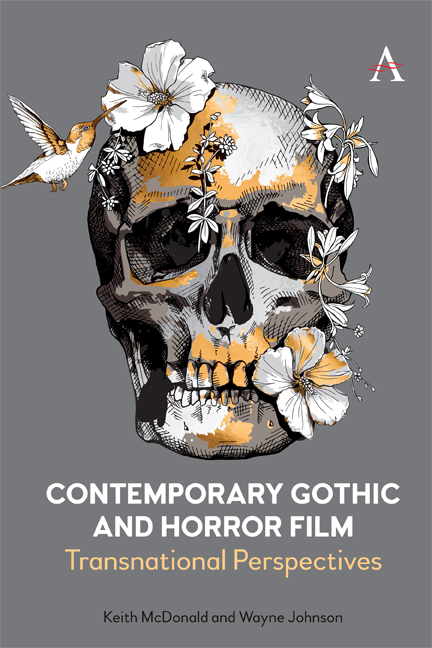Book contents
- Frontmatter
- Dedication
- Contents
- Acknowledgements
- Introduction
- 1 The Gothic Tradition Illuminated on Screen
- 2 Grief Encounters: Ghost Narratives
- 3 Folk in Hell: Rurality in Transition
- 4 Vampire Gothic as Post-Exotic Gloom
- 5 Shock and Awe: Cosmic Horror as Existential Crisis
- 6 De-Composmolitanism: Zombie Horror as Apocalypse
- Coda
- Bibliography
- Index
2 - Grief Encounters: Ghost Narratives
Published online by Cambridge University Press: 04 June 2021
- Frontmatter
- Dedication
- Contents
- Acknowledgements
- Introduction
- 1 The Gothic Tradition Illuminated on Screen
- 2 Grief Encounters: Ghost Narratives
- 3 Folk in Hell: Rurality in Transition
- 4 Vampire Gothic as Post-Exotic Gloom
- 5 Shock and Awe: Cosmic Horror as Existential Crisis
- 6 De-Composmolitanism: Zombie Horror as Apocalypse
- Coda
- Bibliography
- Index
Summary
The Italian writer Italo Calvino delivered the following words in a lecture in 1967: ‘The more enlightened our houses are, the more their walls ooze ghosts. The dreams of progress and reason are haunted by nightmares’ (The New Yorker , 1). This lecture concerns among other things, structuralism and the permutations of the storytelling process, both bound to language whilst seeking to break free of language systems. In seeking to express the ‘mutation’ of storytelling, paradoxically harnessed to genre, yet seeking new forms of being through regeneration, Calvino turns to the metaphor of the ghostly in two ways; one figurative, and the other more historically and materially identifiable. With regards to the former, Calvino states, ‘[t] he line of force in modern literature consists in its awareness of giving a voice to what has remained unexpressed in the social or individual unconscious; this is the gauntlet it throws down time and again’ (1). This encapsulates the symbiosis and tension between past incarnations of expressions, stories and genres and the attempts to both break free from such arrangements whilst utilizing the tools of the arrangements themselves. These are attempts to create new genres that are bound by the genres from which they flee. The ghost imagery is useful here in that stories, like ghosts, are bound to conventions but fuelled by derivation and deviation. With regards to the latter and with more historically direct reference to ghosts, Calvino continues as follows:
Shakespeare warns us that the triumph of the Renaissance did not lay the ghosts of the medieval world who appear on the ramparts at Dunsinane or Elsinore. At the height of the Enlightenment, de Sade and the Gothic novel appear. At one stroke Edgar Allan Poe initiates the literature of estheticism (sic) and the literature of the masses, giving a name and a gait to the ghosts Puritan America trails in its wake. (2)
Here, Calvino makes a striking observation which is a prevalent component of this book; the regenerative nature of genre conventions in cinema that takes on both peculiar and particular forms with regards to Gothic and horror narratives, in that they exist within the blurred boundaries between life and death and this is nowhere more evident in ghost narratives.
- Type
- Chapter
- Information
- Contemporary Gothic and Horror FilmTransnational Perspectives, pp. 29 - 56Publisher: Anthem PressPrint publication year: 2021

